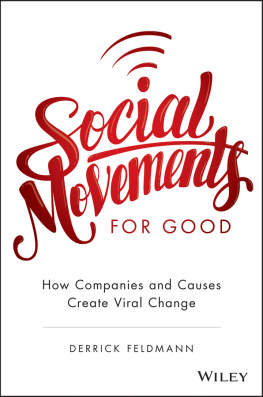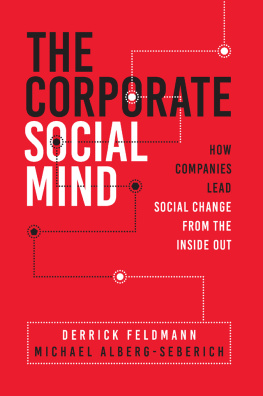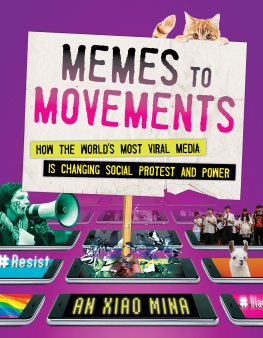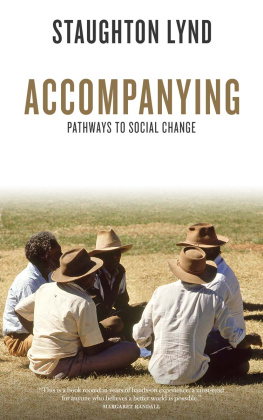
This book is printed on acid-free paper. 
Copyright 2016 by Derrick Feldmann. All rights reserved.
Published by John Wiley & Sons, Inc., Hoboken, New Jersey.
Published simultaneously in Canada.
No part of this publication may be reproduced, stored in a retrieval system, or transmitted in any form or by any means, electronic, mechanical, photocopying, recording, scanning, or otherwise, except as permitted under Section 107 or 108 of the 1976 United States Copyright Act, without either the prior written permission of the Publisher, or authorization through payment of the appropriate per-copy fee to the Copyright Clearance Center, 222 Rosewood Drive, Danvers, MA 01923, (978) 750-8400, fax (978) 646-8600, or on the web at www.copyright.com. Requests to the Publisher for permission should be addressed to the Permissions Department, John Wiley & Sons, Inc., 111 River Street, Hoboken, NJ 07030, (201) 748-6011, fax (201) 748-6008, or online at www.wiley.com/go/permissions.
Limit of Liability/Disclaimer of Warranty: While the publisher and author have used their best efforts in preparing this book, they make no representations or warranties with respect to the accuracy or completeness of the contents of this book and specifically disclaim any implied warranties of merchantability or fitness for a particular purpose. No warranty may be created or extended by sales representatives or written sales materials. The advice and strategies contained herein may not be suitable for your situation. You should consult with a professional where appropriate. Neither the publisher nor the author shall be liable for damages arising here from.
For general information about our other products and services, please contact our Customer Care Department within the United States at (800) 762-2974, outside the United States at (317) 572-3993, or fax (317) 572-4002.
Wiley publishes in a variety of print and electronic formats and by print-on-demand. Some material included with standard print versions of this book may not be included in e-books or in print-on-demand. If this book refers to media such as a CD or DVD that is not included in the version you purchased, you may download this material at http://booksupport.wiley.com. For more information about Wiley products, visit www.wiley.com.
Library of Congress Cataloging-in-Publication Data:
Names: Feldmann, Derrick, 1978--b
Title: Social movements for good: how companies and causes create viral change / Derrick~Feldmann.
Description: Hoboken : Wiley, 2016. | Includes bibliographical references and index.
Identifiers: LCCN 2015039889 (print) | LCCN 2015042192 (ebook) | ISBN 978-1-119-13339-1 (hardback) | ISBN 978-1-119-13340-7 (pdf) | ISBN 978-1-119-13342-1 (epub)
Subjects: LCSH: Social movements. | Leadership. | Nonprofit organizations. | BISAC: BUSINESS & ECONOMICS / Nonprofit Organizations & Charities.
Classification: LCC HM881 .F445 2016 (print) | LCC HM881 (ebook) | DDC 303.48/4 dc23
LC record available at http://lccn.loc.gov/2015039889
Cover Image: iStock.com/JOZZ
Cover Design: Wiley
To Paige and Blair, I can't wait to see how you will change this world for the better.
To Bis, who has been with me on this adventure for more than 10 years.
Preface
The date was May 25, 1986. I was eight years old. My mom and dad came into my room to take our family to Springfield, Illinois, for something called Hands Across America. Traveling 100 miles in the family car, I knew nothing about what we were going to do, be a part of, or even what it was for.
That day, for 15 minutes, my dad, mom, sister, and I joined hands with more than 6.5 million other Americans across the country. We donated $10 to reserve our spot in line, and our donation, combined with others, raised more than $34 million to alleviate famine in Africa and fight hunger and homelessness in the United States.
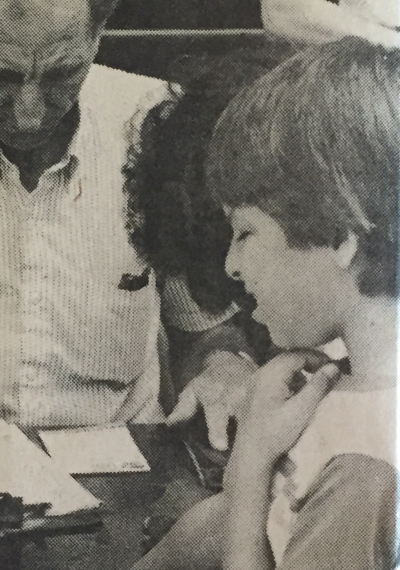
Figure P.1 Registering for Hands Across America with my MotherAnnette Feldmann
This was my first social movement for good.
Looking back, I'm extremely thankful to my mom and dad for bringing me there. That experience influenced how I look at cause work and helped make me who I am today.
Social movements are very much a part of our culture. At some point, we have all participated in one of these movementsas donors, as activists, and as promoters of these important events that make change happen. It's hard to ignore the many movements happening in our society. They enthrall us. Our friends and family care passionately about something and by virtue of our relationship, so do you. These movements matter.
From that summer day in 1986 when I joined hands with 6.5 million other individuals for Hands Across America to 2014's ALS Ice Bucket Challenge, I can't fully recall the number of movements that I have been part of or have touched my life.
Looking back and examining the movements I've participated in, I started to ask myself some questions. Why did I get so excited about that particular cause at that specific time? Why did I do something or take an action then that I would never think of doing now? Why did I donate money during that movement, and did it make a difference?
All of these questions that I started pondering combined with the questions about social movements I hear daily from fundraisers, nonprofit leaders, corporate executives, activists, and public servants have become the impetus for this book.
My team and I have spent the past six years researching how Millennials (individuals born from 1980 to 2000) get involved with causes and what factors trigger and influence their behavior. I realized it was time to look at social movements today to try to answer some of these questions. Rather than focus on one generation over another, I wanted to learn how and why these movements start and inspire so many people to participate in them.
This book examines social movements that have occurred in the past 10 yearsmovements that have inspired so many people to act for good, champion a cause, and build awareness for an issue. The goal of the book is to help organizations and companies, social movement builders, and entrepreneurs who share a common goal of inspiring others to act for good by providing them with the stories, people, approaches, and strategies for successful social movement building. My hope is to provide the real context to the movements of today so that those who read this book can be compelled to change their methods and cultivate successful movements of their own.
Of course, the first thing you should know is that every social movement is unique. No relevant social movement can fully mirror one from the past. Because movements are about people and not a theory and approach, it's the people who drive the agenda, outcome, and success. Therefore, this book is not intended to be an outline of a path but rather a descriptor of what has been proven to work for so many leaders who have forged the road ahead to create social movements that address important issues in our communities, our country, and our world.
You may be wondering why.
Next page
